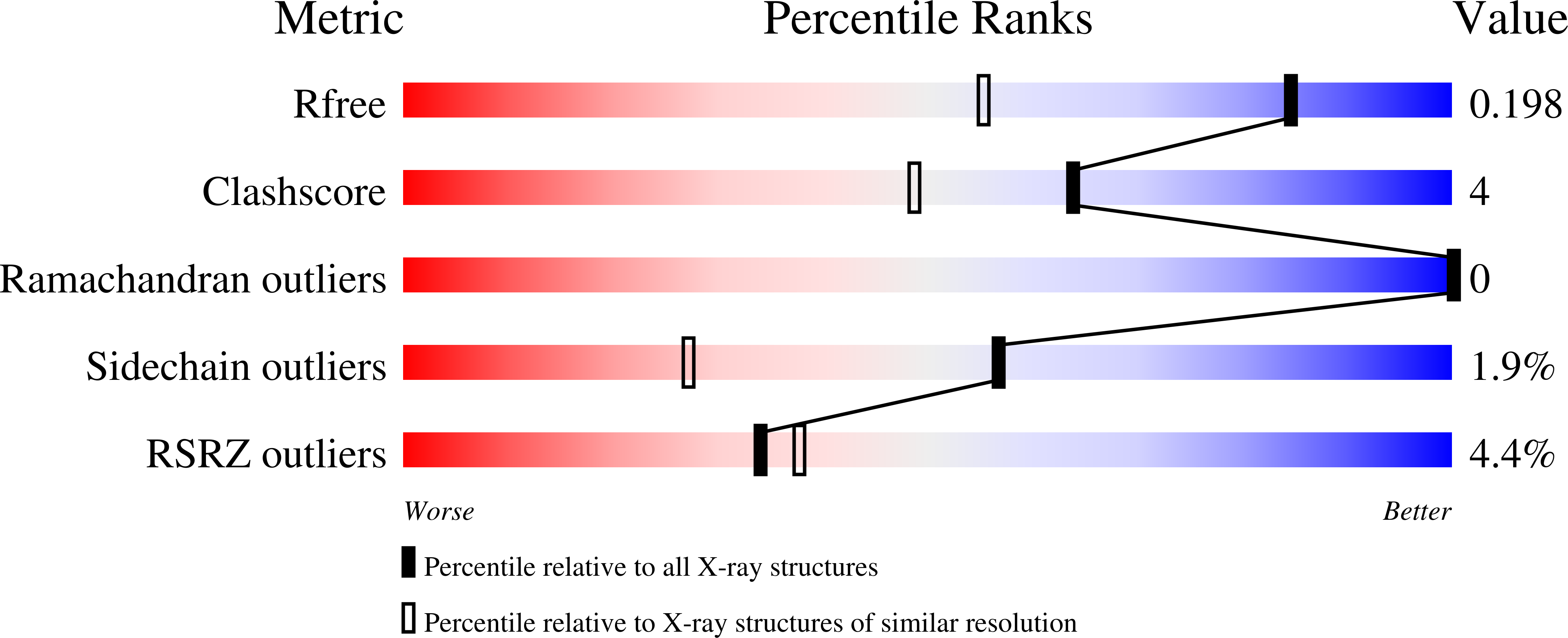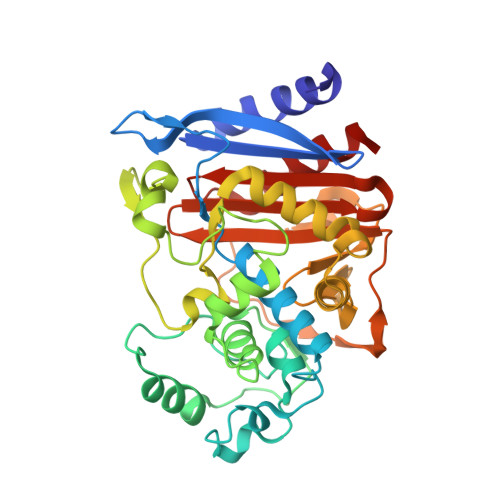Re-examining the role of Lys67 in class C beta-lactamase catalysis.
Chen, Y., McReynolds, A., Shoichet, B.K.(2009) Protein Sci 18: 662-669
- PubMed: 19241376
- DOI: https://doi.org/10.1002/pro.60
- Primary Citation of Related Structures:
3FKV, 3FKW - PubMed Abstract:
Lys67 is essential for the hydrolysis reaction mediated by class C beta-lactamases. Its exact catalytic role lies at the center of several different proposed reaction mechanisms, particularly for the deacylation step, and has been intensely debated. Whereas a conjugate base hypothesis postulates that a neutral Lys67 and Tyr150 act together to deprotonate the deacylating water, previous experiments on the K67R mutants of class C beta-lactamases suggested that the role of Lys67 in deacylation is mainly electrostatic, with only a 2- to 3-fold decrease in the rate of the mutant vs the wild type enzyme. Using the Class C beta-lactamase AmpC, we have reinvestigated the activity of this K67R mutant enzyme, using biochemical and structural studies. Both the rates of acylation and deacylation were affected in the AmpC K67R mutant, with a 61-fold decrease in k(cat), the deacylation rate. We have determined the structure of the K67R mutant by X-ray crystallography both in apo and transition state-analog complexed forms, and observed only minimal conformational changes in the catalytic residues relative to the wild type. These results suggest that the arginine side chain is unable to play the same catalytic role as Lys67 in either the acylation or deacylation reactions catalyzed by AmpC. Therefore, the activity of this mutant can not be used to discredit the conjugate base hypothesis as previously concluded, although the reaction catalyzed by the K67R mutant itself likely proceeds by an alternative mechanism. Indeed, a manifold of mechanisms may contribute to hydrolysis in class C beta-lactamases, depending on the enzyme (wt or mutant) and the substrate, explaining why different mutants and substrates seem to support different pathways. For the WT enzyme itself, the conjugate base mechanism may be well favored.
Organizational Affiliation:
Department of Pharmaceutical Chemistry, University of California San Francisco, San Francisco, California 94158-2550, USA.
















